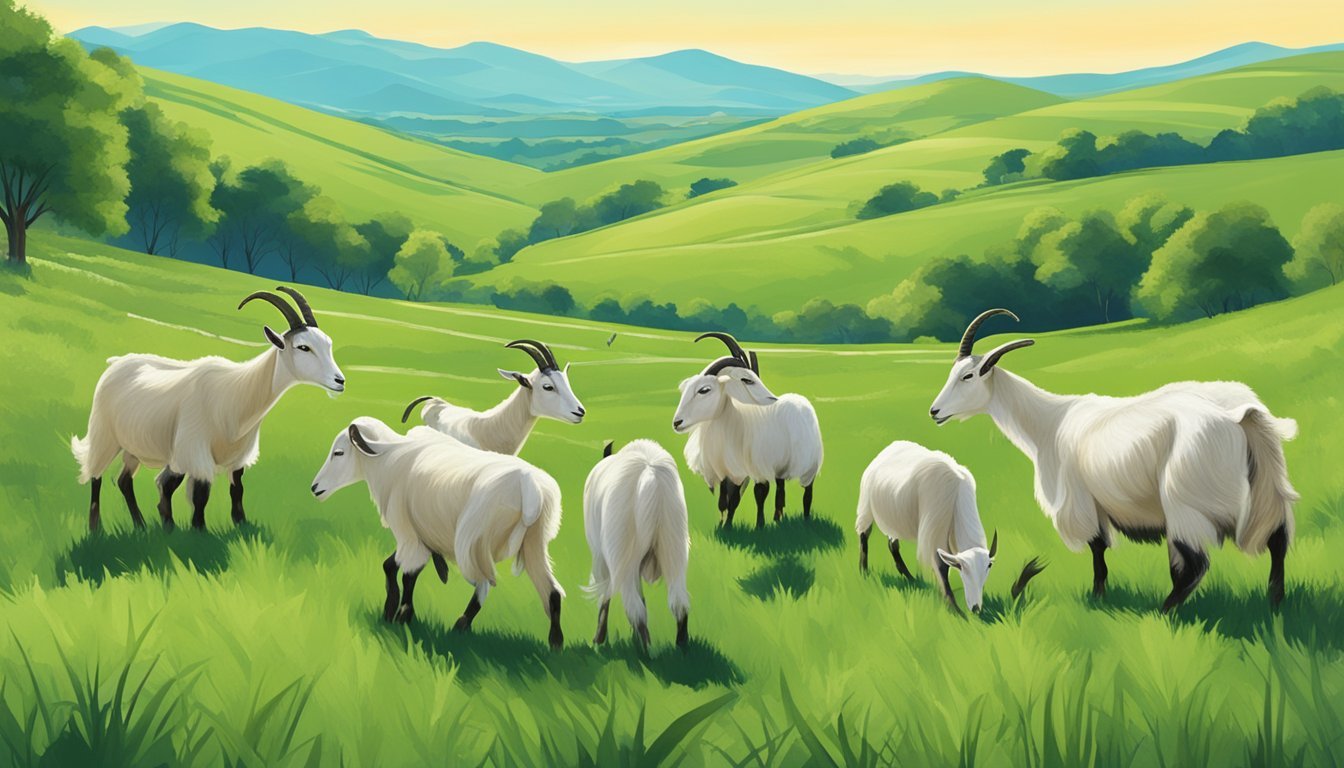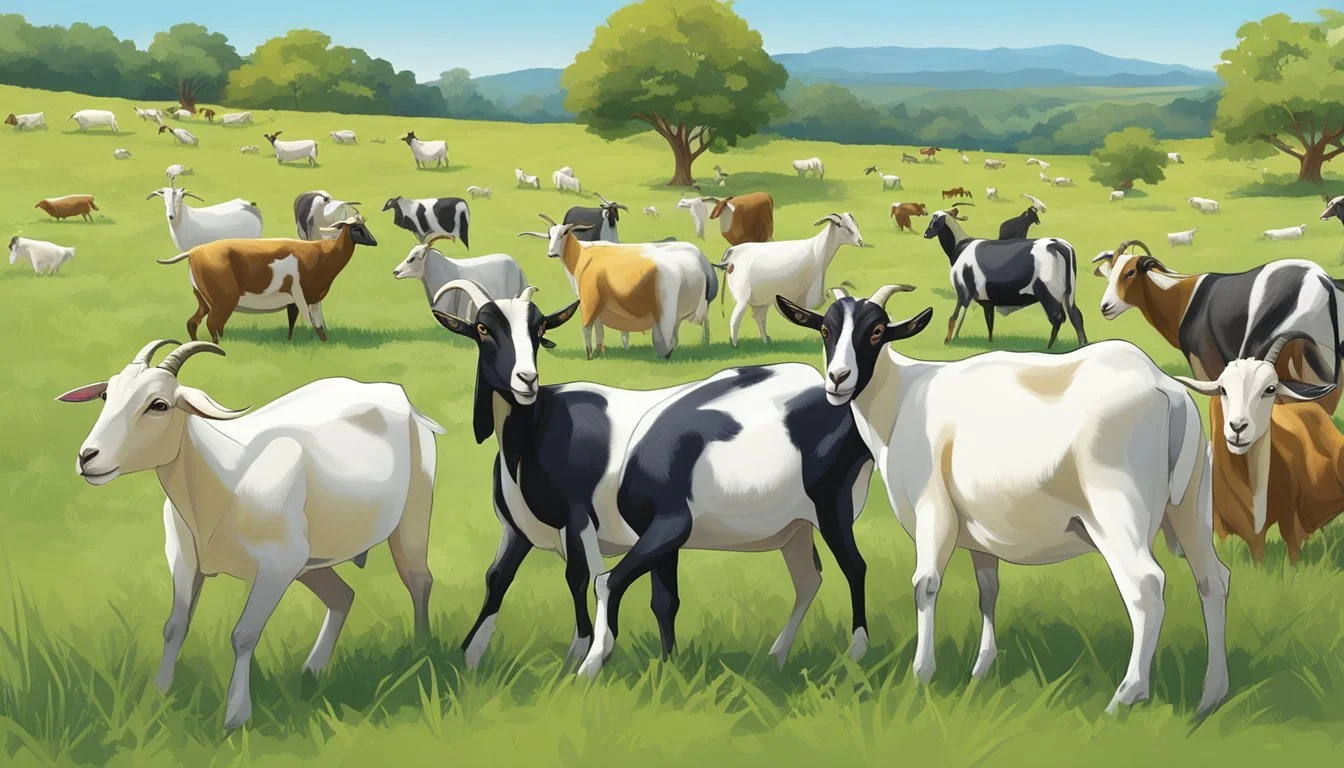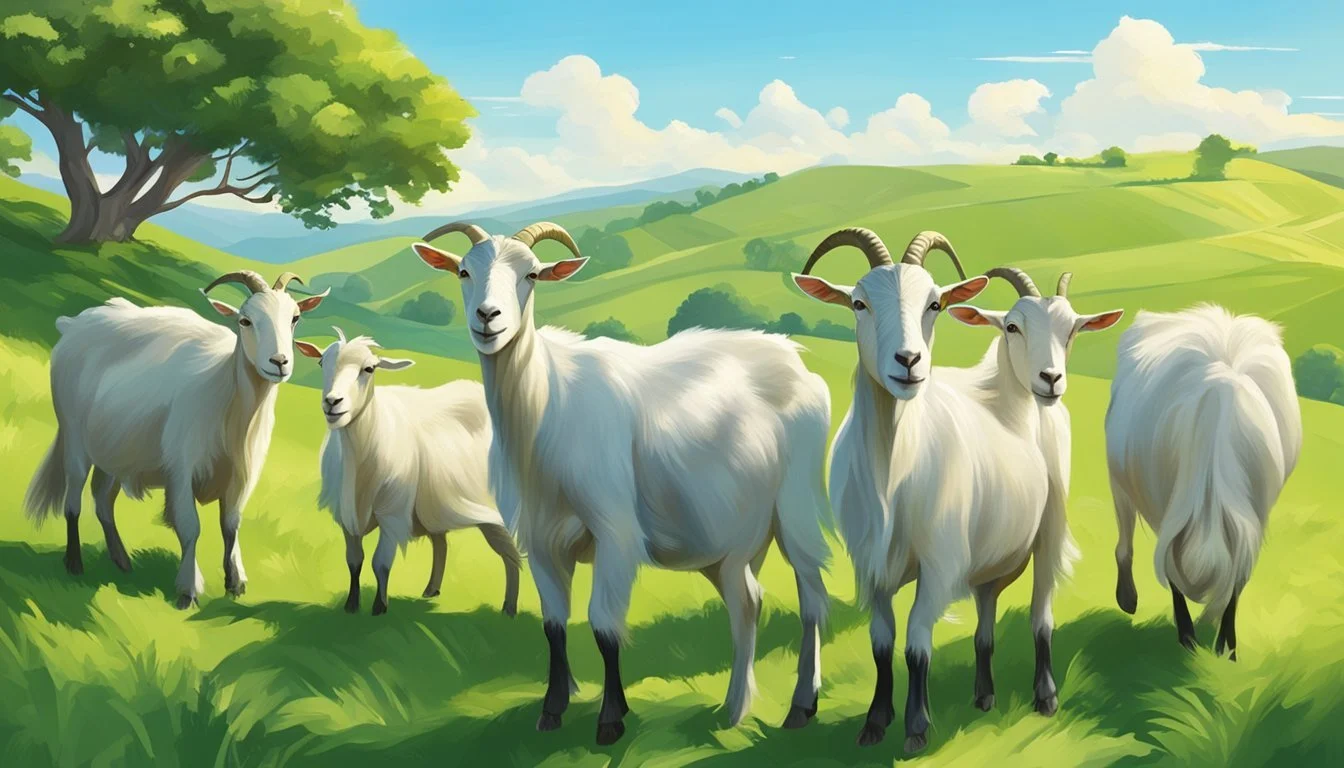The History of Domesticated Dairy Goats
Tracing the Evolution of Caprine Husbandry
Domestication of goats marks a significant milestone in human history, representing one of the earliest instances of animal husbandry. The inception of this domestication process can be traced back to the fertile crescent of Western Asia, where the wild bezoar ibex, native to the mountainous regions of Iran, Iraq, and Turkey, gave rise to today's domestic goats. These early human communities recognized the potential of goats as a resource, providing meat, milk, and hides, which spurred the cultivation of a symbiotic relationship between humans and goats.
Over time, goat domestication evolved with the advancement of agricultural societies. Human selection played a pivotal role in the development of various goat breeds, each adapted to specific environments and purposes. Dairy goats, in particular, became highly valued for their ability to provide nutritious milk. The adaptability and social nature of goats made them ideal for domestication, leading to their spread across diverse climates and cultures.
These domesticated dairy goats would eventually play a crucial role in the sustenance of human populations around the world. As civilizations expanded, so did the distribution of goats, with evidence suggesting their introduction to North America by early settlers in Jamestown and Plymouth Rock. The versatility and resilience of dairy goats have made them integral to agricultural systems throughout history, establishing them as a cornerstone of pastoral life that persists to the present day.
Origins of Goat Domestication
The history of domesticated goats traces back to their early beginnings in Western Asia, where the wild Capra aegagrus underwent a significant transformation to become the Capra hircus—a journey from untamed landscapes to agrarian staples.
The Early Beginnings in Western Asia
Domestication of goats, according to archaeological evidence, began in Western Asia. It was here, in the cradle of civilization known as the Fertile Crescent, that humans first encountered the wild goats. These early encounters set the stage for a symbiotic relationship that would evolve over thousands of years.
Domestication Process and the Zagros Mountains
The Zagros Mountains, a region synonymous with the origin of various agricultural practices, played a significant role in goat domestication. The rugged terrains and variable climates were ideal for the selective breeding of Capra aegagrus, eventually leading to the distinct genetic lineage of domesticated goats, or Capra hircus. Early herders in this region began to influence the species' development by choosing specific traits that were beneficial for survival and utility.
From Wild to Domesticated: Capra Aegagrus to Capra Hircus
Transitioning from wild to domesticated, the Capra aegagrus adapted to human environments. These adaptations were not mere physical changes but also behavioral, as goats became integral to the livelihoods of agricultural communities in the Middle East. The domesticated goat, Capra hircus, emerged as a vital resource, with specific characteristics bred to fit the needs of pastoral societies—ushering in a new era in the history of agriculture and human civilization.
Genetic Footprints of Domesticated Goats
The genetic makeup of domesticated goats reveals their history, adaptations, and the depth of genetic diversity shaped by both natural selection and human-driven breeding practices. This genetic tapestry can be examined through mitochondrial DNA, diversity in breeding, and modern genetic studies.
Understanding Goat Genetics and Mitochondrial DNA
Mitochondrial DNA (mtDNA) has been a pivotal tool in tracing the maternal lineage and migration patterns of domestic goats. Each mitochondrial haplogroup represents a distinct branch of the phylogenetic tree, indicative of geographical origins and historical movements. For instance, genetic scrutiny has shed light on the mitochondrial diversity present in domestic goats, which echoes their complex past and varied ancestries.
Diversity and Adaptation Through Breeding
Human intervention has significantly shaped the genetic diversity of domestic goats. Breeding has led to both intentional selection for desirable traits and unintended genetic shifts owing to adaptation to diverse environments. The use of microsatellites—repeating sequences of DNA—has assisted in the understanding of this genetic variation and the effectiveness of selective breeding strategies.
Modern Sequencing and Genetic Studies
Recent efforts in sequencing the goat genome have offered remarkable insights into the specific genetic changes associated with domestication. These studies involve scrutinizing large datasets to identify variations within the goats' genetic code that have influenced their development over time. Discoveries from these genetic studies provide a foundation for further research, potentially leading to innovations in agriculture and improving goat breeds' productivity and health.
Expansion of Goat Domestication
The domesticated goat's journey from its origins to a global presence marks a significant chapter in agricultural history, revealing a narrative of human migration, trade, and cultural exchange.
Migration and Dispersal Across Continents
Asia and the Southern Levant were early epicenters of goat domestication, with evidence tracing back to ancient Iran and Turkey. Over time, these animals became integral to nomadic tribes, aiding their spread to Central Asia. Traditional migration routes linked disparate regions, establishing goats as valuable resources across Eurasia.
Introduction to Europe and Central Asia
Moving westward, goats entered Europe, adapting to diverse climates from the temperate zones of Greece to the frigid reaches of Scandinavia. They arrived in places like Cyprus, brought by seafaring traders or settlers. Simultaneously, in Central Asia, their robust nature suited the rugged terrain and variable weather.
Goats in American History and Beyond
With European colonization, goats reached the United States as part of the settlers' livestock. As settlements expanded, goats played a role in the agricultural tapestry of the nation. They eventually spread to South America, where they adapted to various climates and contributed to local economies.
The Role of Domesticated Goats
Domesticated goats have been integral to agricultural systems, providing essential resources such as milk, meat, and fibers. They have also had significant cultural and economic influence and are central to the conservation and management of livestock species.
In Agriculture: Milk, Meat, and More
Goats serve as a vital source of milk, particularly critical for dairy production. Their milk is a key dietary staple in many cultures due to its nutritional value and digestibility. Meat from goats is another essential resource, offering a leaner alternative to other red meats. In addition to milk and meat, goats provide other agricultural benefits, including their role in breeding programs aimed at improving livestock morphology and production. Their durable constitution makes them suitable for managing difficult terrains, aiding in the clearing of brush as a form of biological management.
Milk Production: High yield with nutritional benefits.
Meat: A source of lean, red meat.
Cultural and Economic Impact
Historically, domesticated goats have held substantial cultural meaning and have been part of numerous traditions and rituals worldwide. Economically, they contribute considerably to the livelihoods of small-scale farmers and rural economies. Their versatility in providing multiple resources under varied environmental conditions has made them particularly valuable in less developed areas where farming resources are scarce. The trade of goat-derived products represents a significant portion of the agricultural sector for many regions.
Economic Role: Aid for rural economies through product trade.
Cultural Significance: Part of traditional practices globally.
Conservation and Management of Goat Populations
The management of goat populations is crucial to maintaining genetic diversity and ensuring the sustainability of goat farming. Conservation efforts often focus on protecting heritage breeds and optimizing the balance between goat populations and available resources. Effective management practices are necessary to mitigate overgrazing risks and promote the health of domesticated animals. Preservation of genetic diversity within dairy goats also supports future breeding initiatives and adaptations to environmental changes.
Conservation: Safeguarding genetic diversity in goat breeds.
Resource Management: Balancing population with environmental capacity.
Modern Dairy Goat Breeds and Breeding
Today's dairy goat breeds are the result of centuries of selective breeding, aimed at improving milk production and quality. This section explores the development of these breeds, the genetic programs that guide their future, and the role of associations in standardizing breed characteristics.
The Emergence of Dairy Goat Breeds
The landscape of modern dairy goat breeds is diverse, reflecting the numerous adaptations to various environments and breeding goals. Among the most esteemed dairy goats, breeds like the Alpine and Saanen have been subject to breeding practices prioritizing milk yield and hardiness. Each breed has unique traits; for instance, the Oberhasli exudes a striking appearance and contributes to the genetic variety in dairy goat populations.
Selective Breeding and Genetic Programs
Selective breeding practices have played a crucial role in shaping the genetic diversity of dairy goats. Through meticulous mating choices, breeders aim to enhance qualities such as milk volume, fat content, and lactation period. Programs increasingly utilize microsatellite markers and parentage verification to maintain genetic diversity and avoid a genetic bottleneck. They employ these tools to strategically select progeny with desired protein-encoding genes, setting precise breeding objectives.
Breed Specifics and the American Dairy Goat Association
The American Dairy Goat Association (ADGA), a significant body in the realm of dairy goats, oversees breed standards and registrations. Besides breeding, the ADGA provides frameworks for pedigree tracking, milk testing, and improvement programs. Through their work, the ADGA ensures the integrity and advancement of dairy goat breeds within the United States. They facilitate the exchange of breeding knowledge and promote the welfare of all recognized breeds, like the hardy and adaptable Oberhasli.
Goat Domestication in Relation to Other Livestock
When examining the history of livestock domestication, it is crucial to consider the unique paths of different species within the same period. Goats, cattle, and sheep are all examples of domesticated ruminants, but their domestication chronologies exhibit distinct characteristics and outcomes.
Comparative Domestication of Goats and Cattle
Goats were one of the first animals to be domesticated. The domestication process of goats, which began around 10,000 years ago in the Fertile Crescent, predated the domestication of cattle. Goats were originally domesticated for their milk, meat, and hide. On the other hand, cattle were domesticated from wild aurochs, initially for their roles in agriculture as draft animals and later for milk and meat.
Similarities:
Both goats and cattle are part of the Bovidae family.
Early domestication largely focused on the ability to control breeding and produce reliable food sources.
Differences:
The smaller size of goats likely made them easier to manage and domesticate earlier than the larger aurochs.
Cattle required larger grazing areas and were more challenging to maintain, impacting their domestication timeline.
Goats Versus Sheep: Distinctions in Domestication
The domestication of goats and sheep shares significant overlap, with both originating from the Zagros Mountains. Despite both being early additions to human agriculture, they display notable distinctions in their domestication paths and usages.
Physical Differences:
Sheep are known for their wool, which has been selectively bred for textile uses.
Goats have hair, rather than wool, and are less commonly used for fiber production.
Uses:
Sheep became integral for their fleece and meat.
Goats have been multifaceted since antiquity, providing milk, meat, hide, and fiber.
The domestication of both goats and sheep has been a testament to human resourcefulness, with each species adapting to the needs of various cultures and environments. While all the domesticated animals such as goats, cattle, and sheep are integral to agricultural development, the specific qualities of goats, including their adaptability and hardiness, make their domestication history particularly distinct among livestock species.
Challenges and Future of Domesticated Dairy Goats
Domesticated dairy goats face significant challenges related to health and genetics which need innovative solutions. Meanwhile, sustainable farming practices and advanced breeding strategies offer promising pathways for their future.
Health Issues and Genetic Challenges
Dairy goats confront various health issues including infectious diseases and genetic disorders, partly due to limited genetic diversity. The industry must prioritize genetic health to prevent inbreeding and to maintain herd resilience. Selection pressure historically has been low but increasing it can target the enhancement of desirable traits, such as disease resistance, while maintaining a broad genetic base to combat these challenges.
Sustainable Farming and Future Breeding Strategies
Sustainable agriculture in the context of dairy goat farming includes the integration of management practices that safeguard the environment while ensuring animal welfare and productivity. Adapting to climate change is also crucial, with breeding strategies now focusing on traits that confer adaptability to changing environmental conditions. Breeding programs are becoming more sophisticated, employing tools like genomic selection to improve not only productivity but also sustainability in dairy goat farming.





